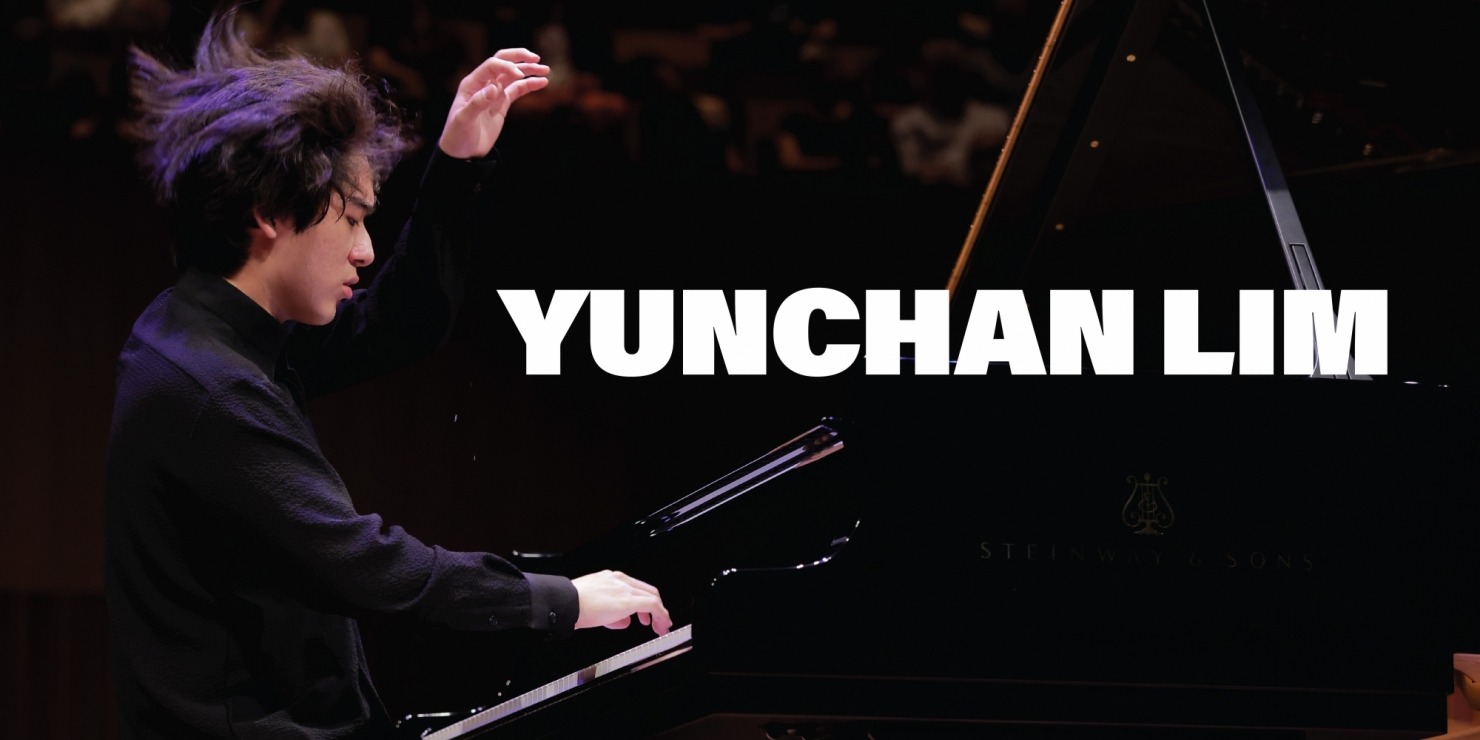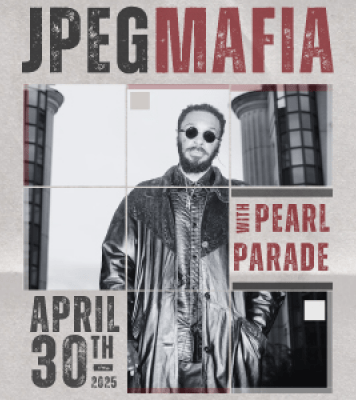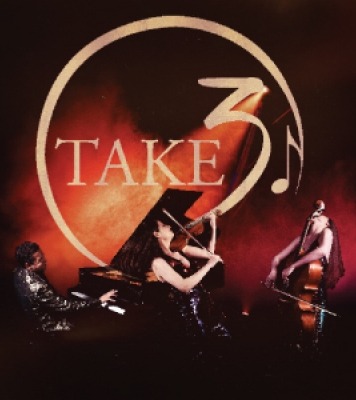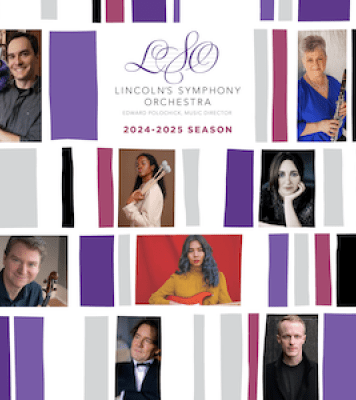Yunchan Lim, Piano
Yunchan Lim, Piano
At just 18 years old, Yunchan Lim recently became the youngest pianist ever to win the Van Cliburn International Piano Competition. He has become one of the most sought-after classical performers in the world, regularly selling out major venues with performances that showcase a “magical ability” and a “natural, instinctive quality” (La Scena). Van Cliburn jury chair – the illustrious Marin Alsop – praised Lim as “that rare artist who brings profound musicality and prodigious technique organically together.” Don’t miss Lim’s long-anticipated Lied Center debut!
“Virtuosity as life force” – The New York Times
Want a discount? Two ways to save:
-
Create Your Own Season package by choosing any 5+ shows from the full season! You'll save 20% off your entire order.
-
Three's company, but ten's a group. Create a group with 9 or more of your favorite folks and enjoy the show together for 20% off most season shows! Contact our Group Sales Manager, Kelly Buresh for assistance.
Email: kburesh3@unl.edu, Phone: 402-472-4734, or submit a group request with link: https://www.liedcenter.org/tickets/group-tickets
Showtimes
We would like to thank our sponsors
Season Lieder: Rhonda Seacrest
Piano Circle: Mary-Ann K. Clinton, Anabeth H. Cox, Keith Heckman, Charlotte Heermann, Mrs. Larry H. Lusk, Christopher Marks & Jessica Freeman, Rhonda Seacrest
This performance is supported in part by the Ruth K. Seacrest Fund.
This performance is supported in part by the Anabeth Hormel Cox Lied Performance Fund.
PROGRAM
Goldberg Variations, BWV 988
J. S. Bach (1685-1750)
- Aria
- Veriatio 1. a 1 Clav.
- Veriatio 2. a 1 Clav.
- Veriatio 3. a 1 Clav. Canone all’Unisuono
- Veriatio 4. a 1 Clav.
- Veriatio 5. a 1 ô vero 2 Clav.
- Veriatio 6. a 1 Clav. Canone alla Seconda.
- Veriatio 7. a 1 ô vero 2 Clav.
- Veriatio 8. a 2 Clav.
- Veriatio 9. a 1 Clav. Canone alla Terza.
- Veriatio 10. a 1 Clav. Fughetta.
- Veriatio 11. a 2 Clav.
- Veriatio 12. a 1 Clav. Canone alla Quarta.
- Veriatio 13. a 2 Clav.
- Veriatio 14. a 2 Clav.
- Veriatio 15. a 1 Clav. Canone alla Quinta.
- Veriatio 16. a 1 Clav. Ouverture.
- Veriatio 17. a 2 Clav.
- Veriatio 18. a 1 Clav. Canone alla Sesta.
- Veriatio 19. a 1 Clav.
- Veriatio 20. a 2 Clav.
- Veriatio 21. a 1 Clav. Canone alla Settima.
- Veriatio 22. a 1 Clav.
- Veriatio 23. a 2 Clav.
- Veriatio 24. a 1 Clav. Canone all’Ottava.
- Veriatio 25. a 2 Clav.
- Veriatio 26. a 2 Clav.
- Veriatio 27. a 2 Clav. Canone alla Nona.
- Veriatio 28. a 2 Clav.
- Veriatio 29. a 1 ô vero 2 Clav.
- Veriatio 30. a 1 Clav. Quodlibet.
- Aria da capo
PROGRAM NOTE
GOLDBERG VARIATIONS, BWV 988 J. S. BACH (1685-1750)
Composed and published in 1741, the Goldberg Variations are named after their first performer, Johann Gottlieb Goldberg, one of Bach’s students. Though the work’s origin story (as recounted by Bach’s first biographer Johann Nikolaus Forkel in 1802) is almost certainly apocryphal, the tale is nevertheless a compelling one. According to Forkel, one Count Kaiserling of Dresden suffered from chronic insomnia and would ask Goldberg, who lived in his household, to play music to calm him during sleepless nights. Upon learning of the Count’s (and Goldberg’s) predicament, Bach composed the Variations as a soothing distraction – a musical equivalent to counting sheep. The story goes that Kaislerling was so pleased with the composition that he gifted Bach a goblet filled with 100 gold coins. Though the lack of a dedication to the Count on the score’s title page, which simply reads “Composed for connoisseurs, for the refreshment of their spirits,” casts doubt on the tale’s veracity, the entertaining lore continues to be retold.
The Goldberg Variations consist of an opening aria followed by 30 variations and a final restatement of the aria. The work is unquestionably monumental in scope,
but its true brilliance lies in Bach’s seemingly endless ingenuity in reimagining the main theme through a vast series of time signatures, moods, textures, and harmonic alterations. The aria itself is a richly ornamented sarabande – a slow, triple-meter dance with Spanish origins, adorned in the French style. Rather than following the aria’s melody, the variations build upon its bass line and chord progression, allowing Bach the freedom to continually recast the original tune. When the opening aria at last returns to place a concluding bookend on the work, the music’s striking simplicity speaks to the diverse intricacy of the preceding variations.
Virtually forgotten after Bach’s time, the Goldberg Variations were reintroduced to modern audiences in 1955 when 22-year-old Canadian pianist Glenn Gould recorded the work for his debut album with Columbia Records. The album became one of the best-selling classical recordings of all time, with Gould’s interpretation lauded for its “dazzling clarity of texture and kaleidoscopic range of tone colors,” as well as its “emotional richness.” Since then, Goldberg has been recorded over 600 times on various instruments and remains a popular showcase for concert performance.
Note by Laney Boyd







Follow Our Lied